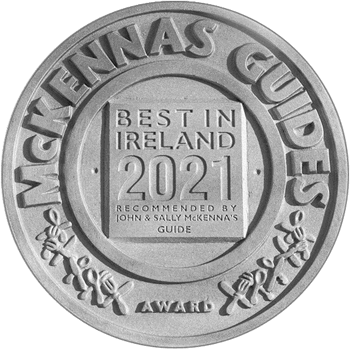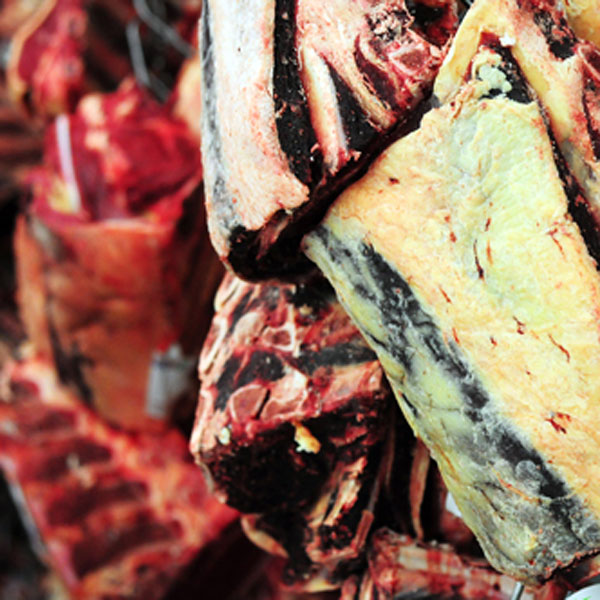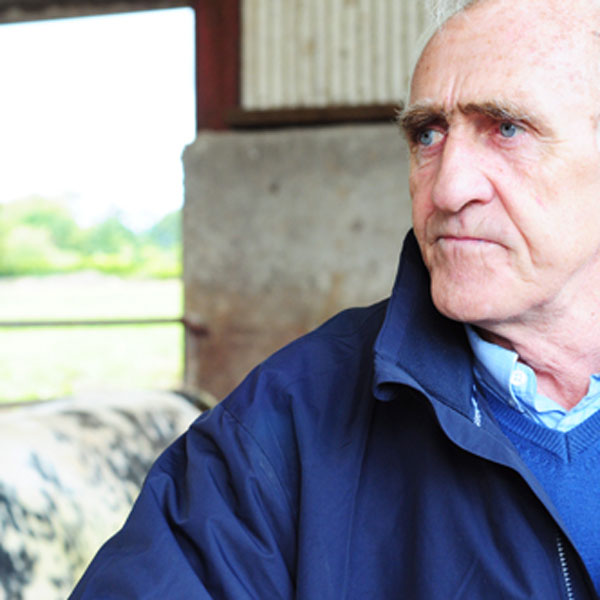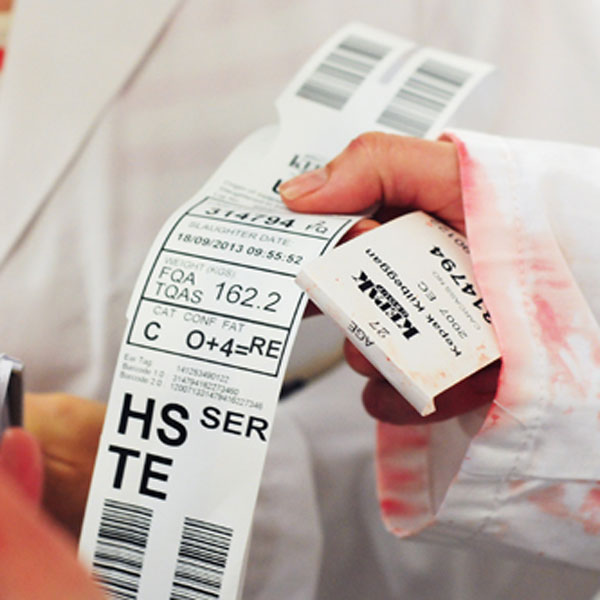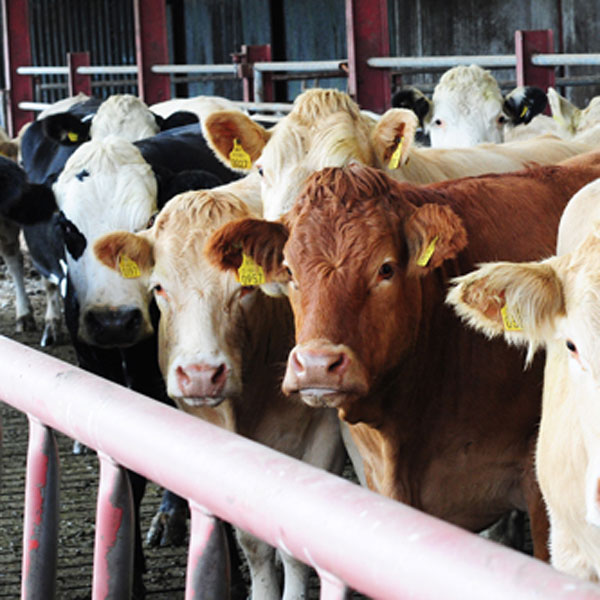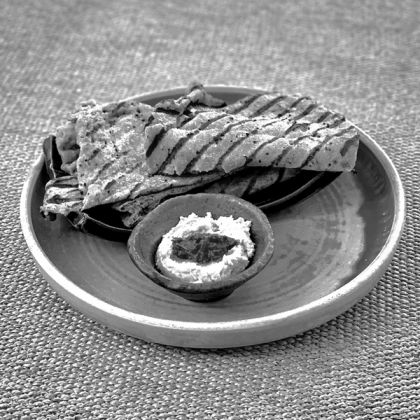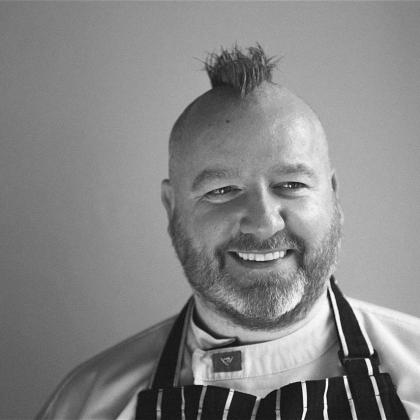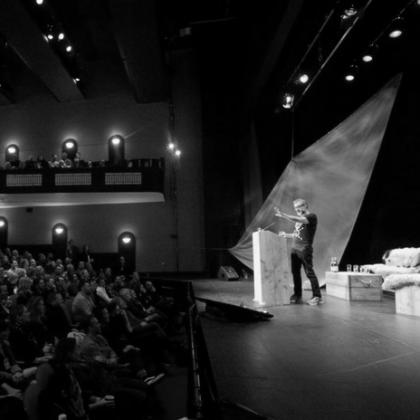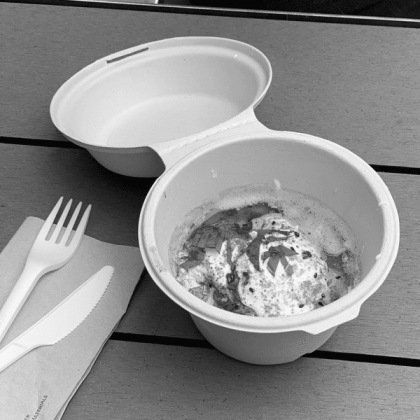ME, BIG FOOT. YOU, HEREFORD.
Apart from being helpful in getting from A to B, feet usually play a minor role in my food trips. It was unusual, then, in advance of a recent outing, to find myself having to admit to a large shoe size (something I usually reserve for shoe shoppery). My declaration of big feet did, however, serve to distract from the reason for having to do so: the trip in question, which was all about beef, would involve getting suited and booted for a visit to an abattoir – not the kind of proposition guaranteed to fill anyone with great joy, exactly. Chances are I would spend a fair bit of time looking at my big booted feet while I was there.
OFF TO THE ABATTOIR, THEN.
Regardless of how we feel about eating meat, most of us can do without the in-your-face-blood-and-guts of it; the simple practicality of having to kill the damn beast first. We remain blissfully removed from the ins and outs of putting steak on a plate and divorced from the realities of what distinguishes one piece of beef from another.
I MEAN, IT'S ALL JUST BEEF, RIGHT?
Except for when we found out it was horsemeat, of course. At a time when we are more likely than ever to regard the meat processing industry with suspicion, respect is due to those who open their operations to public view and have you see, in all of its bloody detail, how they effect the transition from live animal to sides of beef. And it at least partly explains why the invitation from Redmond Fine Foods to come and see the dry aged beef process as practised by Donald Russell International – supplier of prime Irish beef, both for export and into high end restaurants here in Ireland – included a trip to the abattoir, boots ‘n’ all.
NOTICE: YOU ARE ENTERING A FOOD PREPARATION AREA.
As signs go, that one covers a multitude. On another day and in another place, it might have signalled the cooking of some jam or the pressing of some cheese. We – a group comprised of chefs, mostly, along with a few food writer types – were in the Kepak plant in Kilbeggan, Co. Westmeath, and on the other side of the door was the slaughter line, where 200 or so animals, each tracked by means of their own identifying passport, would be dispatched that day.
It seems to me that there are two occasions when you truly appreciate how sizable cattle can be: one is when you are a breathless youngster being chased across a field by an angry bullock; the other is when you pass through that slaughterhouse door and see them stunned and hung by their back legs on an overhead rail system; they dwarf the operative whose job it is to sever an artery and complete the kill. It’s unavoidably bloody work, but apart from the steady whirring of machinery, it’s calm and clinical. The dismantling of the formerly live animals progresses as they move down the line: skin off, innards out, carcass checked and graded – from beast to beef in half an hour.
YOU LIKE TO SEE SOFTISH HAIR ON AN ANIMAL, IT'S A SIGN THAT IT'LL THRIVE.
Post-abattoir, we visit Jimmy Mulvihill’s farm outside Ballymahon in Co. Longford. He produces a couple of hundred beef cattle each year from a mixture of breeds, including Charolais, Hereford and Limousin. Raising good beef is less about breed, we learn, than the quality of the individual animal: a lifetime of farming has taught Jimmy that cattle with softish hair tend to do better; a good wide rear end is no harm either.
Donald Russell International, according to M.D. Allan Morris who has brought us here to Jimmy’s farm, look for the kind of beasts that Jimmy can raise – well fed and well fleshed, not more than 36 months old, and with good conformation (that’s body shape in beef speak). Jimmy’s animals spend most of their time out on grass and are finished for 60 days on a mostly grain-based meal to develop fat cover; whereas the wider trend may be for leaner meat, on a fat cover scale of 1 to 5, Donald Russell only select animals who clock in at 4 or more – for them, fat’s where it’s at and marbling is key. Overall size matters too: gone the desire to have carcasses weigh in at anywhere from 400kg to 550kg; around 320kg is considered optimum for subsequent portioning – smaller beasts make for thicker steaks.
WE'RE GRADE A McDONALD'S APPROVED – THAT'S THE HIGHEST STANDARD GOING.
Allan Morris was referring to the high-spec Kepak meat processing plant at Ballymahon, which had a €12.5M overhaul in recent years, complete with biometric security system – a requirement of doing business for many customers. We’re shown around the plant and see, on the main factory floor, lines of operators prepare and package various cuts as a steady stream of raw beef moves past – though it’s nothing like as raw as at the abattoir.
Kepak, founded by Noel Keating in 1981, is a large, privately held meat processing business, with 11 processing sites, dealing with around 250,000 cattle and 850,000 sheep annually and with customers from SuperValu to Burger King. Donald Russell International – whose co-founder John Stone is a co-author of the Meat Buyers’ Guide and recipient of an MBE for his services to the U.K. meat industry – is a joint venture with Kepak: prime cattle that pass through Kepak’s facilities and that meet the Donald Russell selection criteria are routed to the Ballymahon plant’s dry ageing facility, where meat hangs on the bone in what is, essentially, a very large, high-ceilinged fridge. Humidity, temperature and air velocity are carefully controlled; the technical specs are even more closely guarded.
As the beef hangs, a black crust forms on the outside of the meat and, over a period of 21 days – a length of time which experience has taught them is optimal – it loses moisture, fats oxidise, flavour concentrates and colour deepens. For two days a week, the pace at the plant slows as time is given over to final processing of the dry aged beef, which travels thence to places like l’Ecrivain and the Merrion Hotel, and is exported around the world.
YOU CAN GET A LOT CHEAPER, BUT YOU PAY FOR QUALITY.
That was the simple summary from Gareth Mullins, executive chef at Dublin’s Marker hotel. He was among the group of chefs who had pulled on their boots (of various sizes) and attended from abattoir to ageing room; these are people who know that it’s not ‘just beef’ – they’ve seen the good stuff, looked it in the eye and put it on your plate. All you or I have to do is eat and appreciate.
